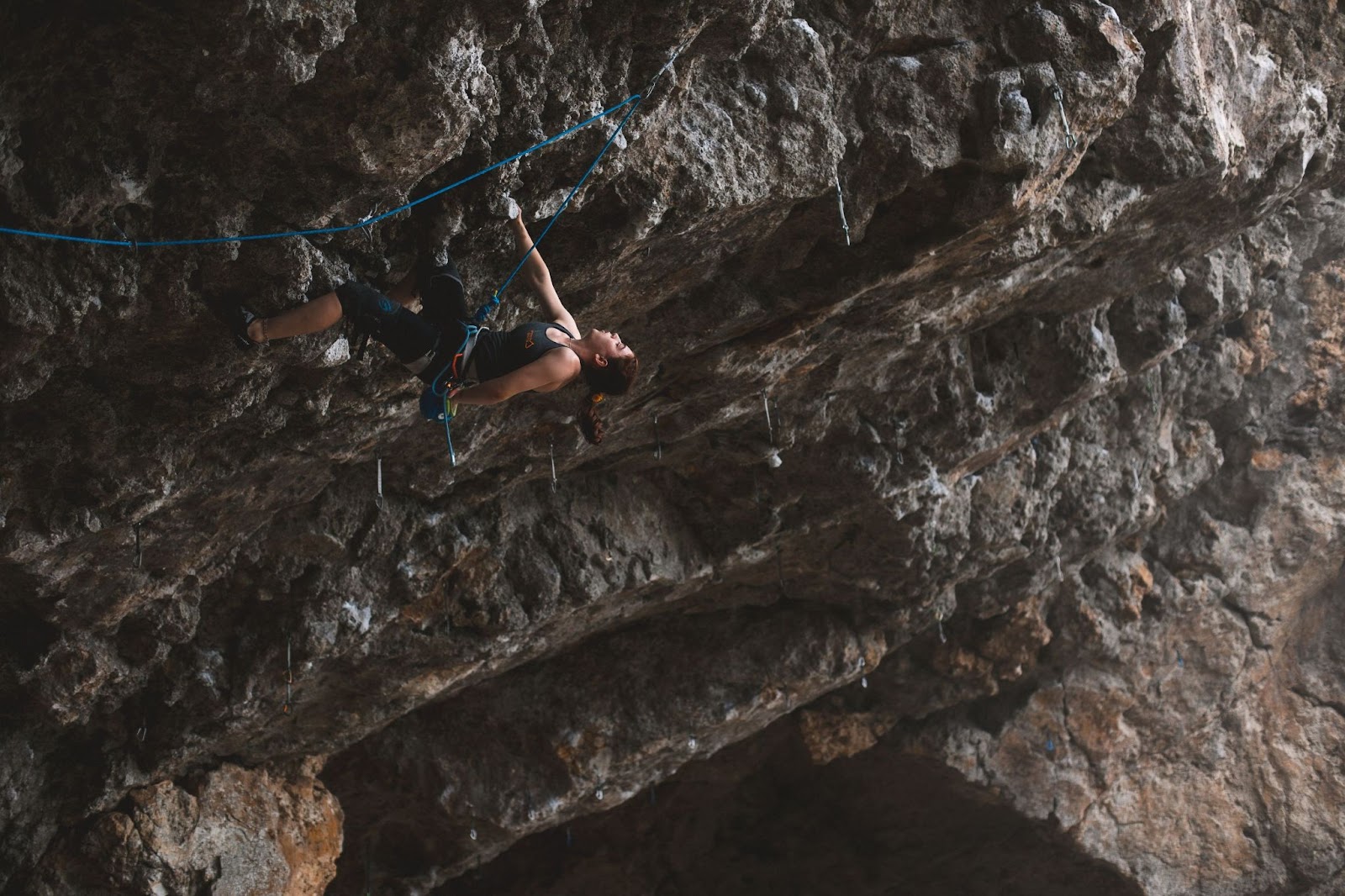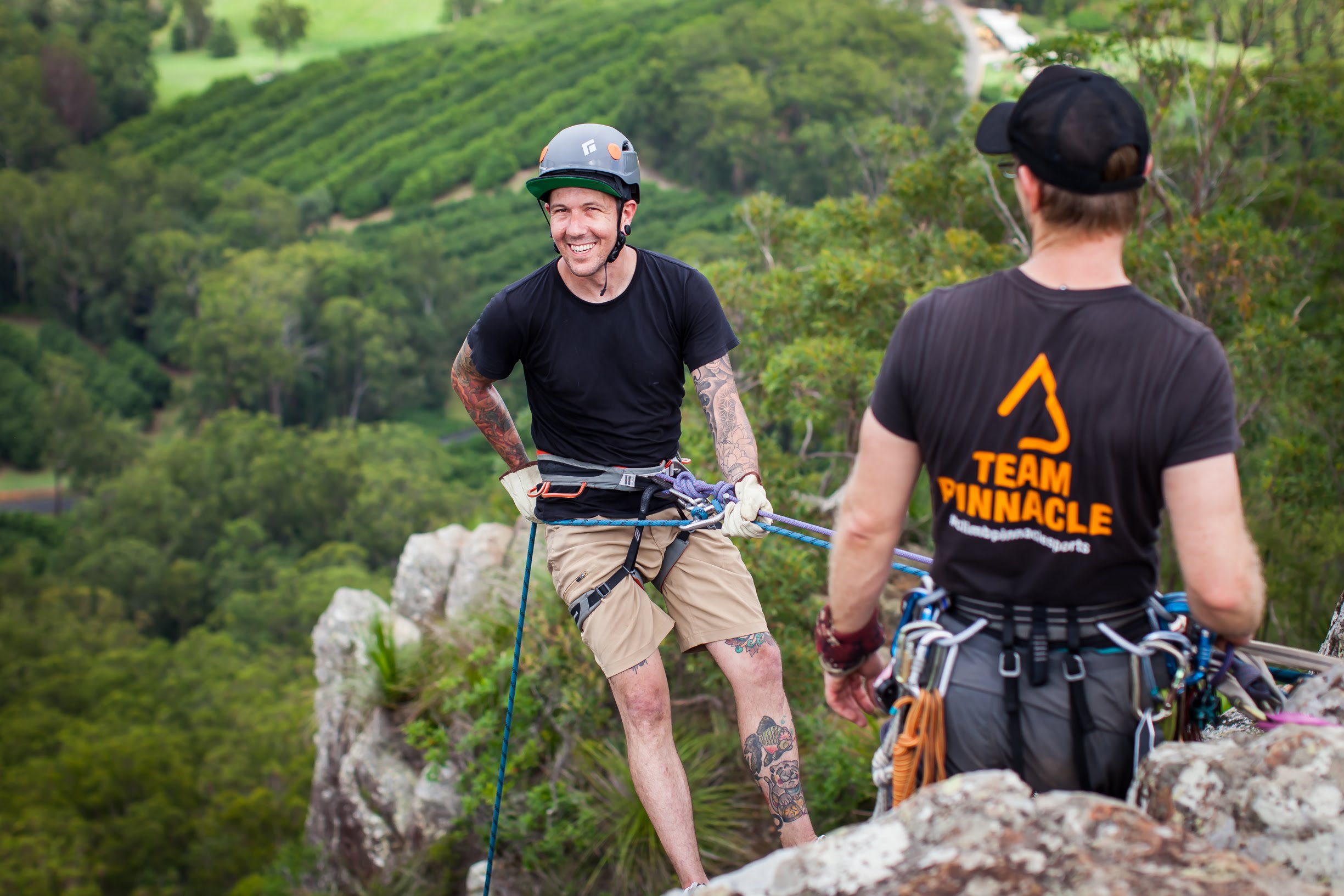
Photograph: Victor Hall Photography
Written by Pinnacle Sports Ambassador, Clea Hall
Climbing, how to explain it… it is the feeling of finally taking a breath of air after being underwater so long that your lungs begin to tear apart. It feels empowering, giving you that confidence and strength to deal with anything. It is freeing, when it is only you and the wall with nothing and no one else who matters. Often, when I’m injured, the bright side of me becomes dormant for the duration of the recovery time.
When I get injured, I read every injury book and article that could help me get back to climbing as fast as I can- fear overwhelming all other emotions. Yet, none of them described the turmoil that comes with being injured, so as any of us would do, we write it ourselves.
Whenever I walk into the hospital or physio appointment for an injury; the one thing that I can ever think of is ‘How long is the recovery time?’. For my ankle injury, I came off the wall, instantly knowing that walking would be impossible. Yet, on arrival home, I went straight to the woody to test out if the moonboot could hold my weight. And again, for my fractured proximal phalanx injury, I was sitting on the hospital bed, in a cast, testing out if I could still do a 3 finger drag. There must be a way for me to still climb, I thought. I’ll even climb the KP stairs if that’s the only climb I can do.
The day after the initial injury is a mix of wanting to go to the climbing gym, and knowing that there is no point as I’m not able to climb. Although when I do, I end up having small talk after small talk, with friends and others I once considered acquaintances. The topic of conversation is always: ‘What happened?.’ Finally leaving the gym, the weight of not being able to climb and not seeing those climbing buddies for a long time, came crashing down. Sobbing on a phone call for hours afterwards, my mind running wild in front of my eyes. If only it didn’t happen. I’m going to be so much weaker. I don’t know if I can trust myself with all the time that I used to spend climbing. I just want this to be over. To my few non-climbing friends, I am considered Clea, the climber. So, when that part of me is gone; who am I anymore? Constantly. Until I start to feel lost, like a damaged good that never arrived at its destination.
Once the fact of the injury settles in, I begin to miss the small instances that happen while I’m climbing. Laughing at the peak of Flinders Peak about how me and my friend, 2 inexperienced bolters, would find a crag and name every climb after a song from Hamilton. Coming off a climb that someone called a V3 on Stokt but it is missing footholds so is a V8. Having an impromptu night swim after sending a climb at Coolum, and having some strangers join us too! Once you don’t have something you realise how important it is.
Then I begin to realize that if I don’t get my life together, I’m going to end up going back to climbing and feel terribly weak and unfit. That is a feeling we all know and hate. Here begins the few weeks or months of trying to cram everything I can still do into a crazy intensive program of cardio, legs and core. I’ve read and seen enough self-help books and cheesy inspirational quotes to finally comprehend that I won’t be able to climb but can still do complementary activities or sports. Some days are still hard. Going to competitions and wanting to be on the wall. Going to the gym and seeing that they are going to be routes that you will never try just because the injury recovery is taking more time than the full gym reset. Or even talking to climbing friends. It’s okay. Nearly there. Only a few weeks left.
With recovery time, it always varied with the different doctors. Some say it would be 6 weeks, others say 3 months. It’s hard to keep up the motivation when the recovery time keeps getting pushed further and further back. Yet, I found that going day by day and hour by hour kept me trudging towards the finish line of the injury. I found simple ways to reshape my life to keep the motivation: watching climbing videos while on a stationary bike or going to the climbing gym to simply watch others climb. There are still some days where I touch the holds on my home woody and have tears streaming down my face- that sadness is an unmoving part of my recovery and I’m okay with that. I know that one day this injury will become history and climbing will consume my life once more.
I have lost my lifeline, my identity and finger strength all because of a freak accident with a bike. Yet the first time back on the wall is just like falling in love with climbing all over again. Crying tears of joy from being able to breathe once again. Climbing is an ebb and flow of injury and recovery, back on the wall with a new perspective and new dreams, each time just a little bit stronger. It’s a beautifully vicious part of the sport that needs to be talked about. I hope that by writing this article, conversations begin. It is time to shed light onto the darker, hidden side of injuries.
Looking for more great reads? Subscribe to our newsletter to stay up to date with the latest climbing tech, crag recommendations and upcoming events.






